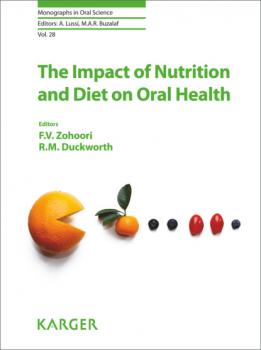Monographs in Oral Science
Скачать книги из серии Monographs in Oral ScienceThe Impact of Nutrition and Diet on Oral Health
Most oral diseases are preventable, yet they remain the most globally common noncommunicable disorders, affecting people throughout their lifetime. Lifestyle, including diet and food choice, is central to the occurrence of oral disease. Nutrition and diet can impact the development and status of the oral cavity as well as the progression of illness. Also, poor oral health can influence the ability to eat and, consequently, to maintain an adequate diet and nutrient balance. This book, consisting of 14 chapters, provides current information on the impact of nutrients (macro- and micro-elements and vitamins) and diet on oral health and vice versa (i.e., the impact of oral health on diet/nutrition). It also reviews possible oral health effects of probiotics as well as relationships between genotype and diet, which are important for determining oral disease risk. This book is a helpful resource for under- and postgraduate students. It will also be useful to dentists and nutritionists/dietitians as they integrate nutrition education into medical practice.
Caries Excavation: Evolution of Treating Cavitated Carious Lesions
Currently there is no reason, in most cases of cavitated caries lesions, to remove affected tissue. This book presents evidence-based research on the topic and provides assessments of diagnostic devices. It offers new insights into how a dentine carious cavity can be managed by either tissue removal or restoration. Methods for preserving dental tissue are presented and ample evidence highlights the need to seal with a quality restorative material. An update on how to conduct a randomized clinical trial is followed by a chapter on agreed upon terminology for supporting improved communication among oral health professionals around the world. This is a must-read for general practitioners, restorative specialists, dental students, and oral hygienists/therapists.


